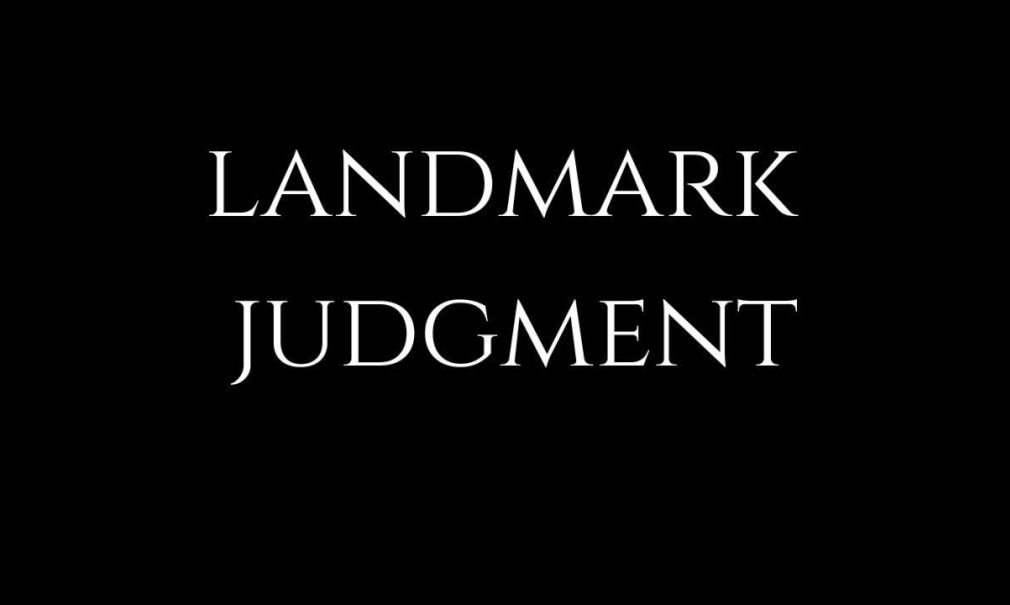Court: Supreme Court of India.
Citation(s): 1997 2 SCC 745; AIR 1997 SC 1711.
Case No.: 85 of 1997.
Case Type:
Date of Judgement: 10/01/1997.
Petitioner:
- Bhuri Nath & Ors. Etc.
- The Sewa Committee Baridaran & Ors.
Respondent: The State of Jammu and Kashmir & Ors.
Bench:
- Justice K. Ramaswamy.
- Justice G.B. Pattnaik.
Statutes Referred:
- Jammu and Kashmir Shri Mata Vaishno Devi Shrine Act, 1988 (XVI of 1988) (for short, the “Act”)
- General Clauses Act.
- Constitution of India.
Cases Referred:
- Badri Nath & Anr. vs. Mst. Punna (Dead) By Lrs. and Ors. [AIR 1978 SC 1314 at 1318].
- Hardwari Lal, Rohtak vs G.D. Thapase, Chandigarh & Ors [AIR 1982 P & H 439].
- Ram Nagina Singh & Ors. vs S.V. Sohni & Ors. [AIR 1976 Patna 36].
- A.S. Narayana Deekshitulu vs. State of A.P. & Ors. [(1996) 9 SCC 548 at 604].
- Bela Banerjee vs State of West Bengal [(1954) SCR 558].
- Charanjit Lal Chowdhary vs Union of India [(1950) SCR 869 at 902].
Facts:
- The appeals, by special leave, in this case, arising out of the Common Judgement of the Division Bench of the Jammu and Kashmir High Court, made on 17th March 1994 in CWP Nod. 1328/96 and 10395/95.
- The Governor of Jammu and Kashmir, on 17th March 1986, exercised his powers of Section 92 of the Constitution of Jammu and Kashmir and promulgated Ordinance No. 1 of 1986, which got transformed into the Jammu and Kashmir Shri Mata Vaishno Devi Shrine Act, 1986 and the abovementioned act is now replaced by the Act.
- The Act came into force by the operation of Section 1(2) of the Act w.e.f. 13th August 1986, the date on which the said ordinance came into force.
- The Act was made to provide better management, administration and governance of Shri Mata Vaishno Devi Shrine, its endowments, all temples, and the sum total of the properties, movable and immovable, attached or appurtenant to the Shrine within the area specified in the preamble of the Act.
- By order dated 16th January 1995, the Court directed the Board to frame a scheme for rehabilitation of all the persons engaged in the performance of Pooja at Shri Mata Vaishno Devi Shrine and other temples to be displaced by the implementation of the Act.
- The Baridars did not want rehabilitation. Instead, they preferred to receive compensation to be received under Section 20 of the Act.
- The Act did not make either any provision for payment of compensation or principle or guidelines for determination of compensation to Baridars.
- Following a Court Order, guidelines for compensation were published by the Governor and published in the State Gazette on 8th May 1995.
- By an order dated 21st August 1995, the main issue, in this case, was determined to be related to the nature of the Board and whether it was a controlled corporation.
Issue:
- Whether Mata Vaishno Devi Management Board is a controlled corporation?
- Whether the Governor exercises his powers as the Executive Head of the State or in his official capacity as the Governor of the State of Jammu and Kashmir?
Contentions by Parties:
Contentions by Petitioner-
- The Board is a controlled corporation.
- In a previous case, the Court had held that the right to receive offerings was the property of the Baridars. Offerings and other properties were acquired under the Act and vested in the controlled Corporation, viz., the Board. For their abolition, Baridars are entitled to compensation.
- Section 19 downs not prescribe compensation for payment, nor it lay any principle to determine compensation. Therefore, the Act is ultra vires of the power of the legislature.
- The Governor draws his power as a repository of the State Executive.
Contentions by Respondents-
- The state has the power to interfere with the basic feature of Secularism for proper supervision and efficient management of religious institutions and endowments. The abolition of the right to receive offerings is a part of the secular management of religious institutions.
- When the Governor exercises his powers under the act, he does so in his official capacity as the Governor and not as Executive Head of the State.
- The properties of the Shrine or the management are not vested in the State. They are merely under the control of the State.
- There is a distinction between acquisition and deprivation. The Act deprives Baridars to receive offerings, but it is not an acquisition by the State. Mere deprivation does not amount to acquisition.
Obiter Dicta:
- Though constitutionally the executive power of the State vests in the Governor, he does not, unless Constitution expressly conferred on him, personally take the decision. The decisions are taken according to business rules at different levels. Ultimately, the decision rests with the authority specified in the business rules and is expressed to be taken in the Governor’s name. The legislature entrusted the powers under the Act to the Governor in his official capacity. No distinction between the Governor and executive Government is made by the legislature in the relevant provisions in the Act.
- The Governor is sovereign ex-officio holder of power and shall be responsible for proper, efficient and effective administration, management and governance of Shri Mata Vaishno Devi Shrine, Shrine Fund and the sum total of the properties etc.
Judgement:
- The Governor exercises his power in his official capacity as ex-officio Chairman.
- The Board is not a controlled corporation.
Rationale:
- Though the performance of ritual ceremonies is an integral part of religion, the person who performs it or associates himself with the performance of ritual ceremonies is not.
Conclusion:
- A balance has to be struck between the rigidity of the right to religious belief and faith and their intrinsic restrictions in matters of religion, religious beliefs or religious practices guaranteed under the Constitution.
Prepared by Mihir Poojary.

